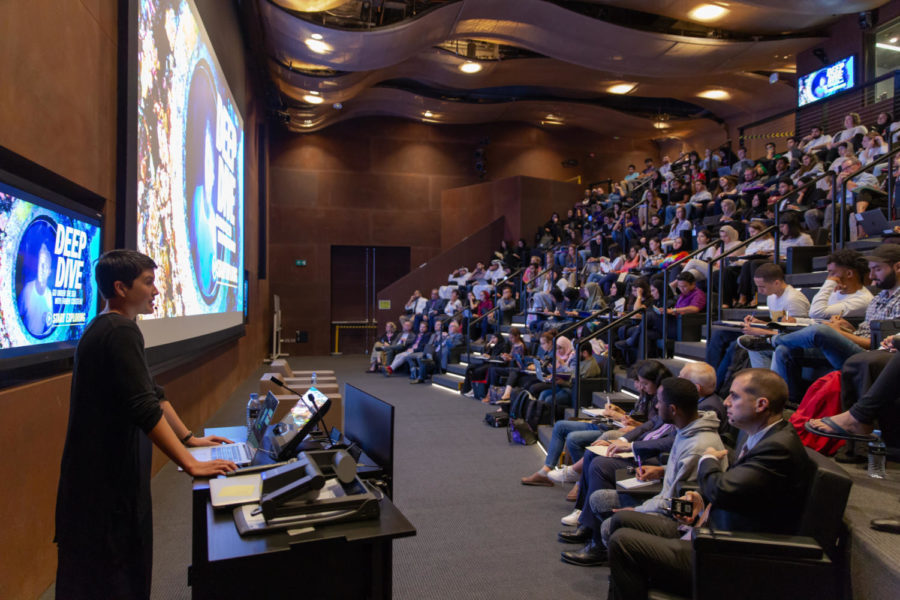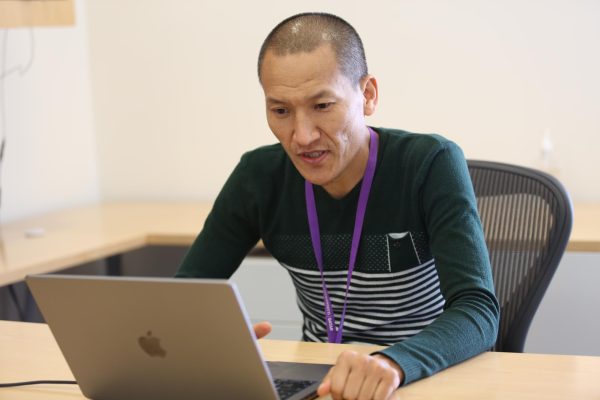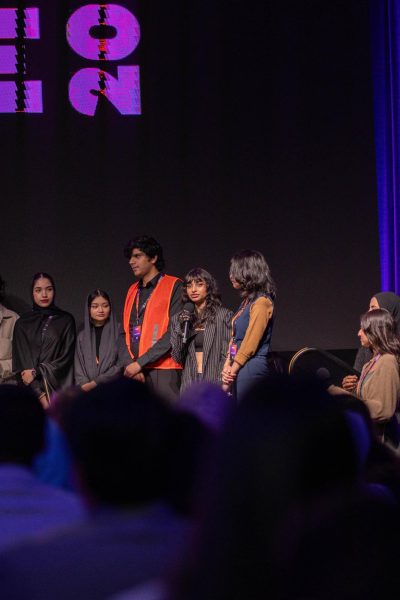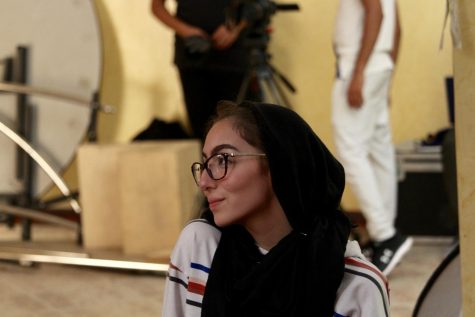Mia Tramz on Her Start in Virtual Reality
Mia Tramz speaking at a community meeting at Northwestern University in Qatar. Photo provided by NU-Q.
Immersive experiences are undeniably compelling. The more immersive an experience, the more emotional attachment a user will develop for that brand, according to Mia Tramz, managing editor of LifeVR, who spoke at a community meeting at Northwestern University in Qatar on Sep. 18.
LifeVR is a multi-platform virtual reality platform launched in September 2016. It features virtual reality experiences from publications such as Time magazine, People, and Sports Illustrated. Tramz produces virtual reality videos, which are made in a way that the viewer is able to interact with the virtual environment, as well as explore in a lifelike way the recorded view in every direction. “Defying the Nazis,” “Lumen,” and “Rouge One: A Star Wars Story” are only a few examples of her creations. Tramz and her team have won awards for their work in virtual reality video production, such as a 2018 Emmy award for Digital Innovation for the film “Capturing Everest.”
Tramz’s metric for a project’s success is its cultural impact. “If I get people talking, that’s success to me,” she said, adding that earning the trust of the audience is also a major responsibility.
The Daily Q sat down with Tramz to pick her brain on VR production. The interview has been condensed and edited.
What was your life like before you entered the field of VR production?
When I was a fine art senior in college at Columbia, I did a yearlong unpaid internship at Vanity Fair. I worked part time in the beauty department and part time in the media department. I learned a lot there and it was my first job in media. I also worked in the equipment room at Milk Studios – I set up the studios for the next day, arranged all the equipment and so on. I was also a bartender for a while. After those first three jobs, I got hired as the only employee at an e-commercestartup, called the House of Exposure,and ran a product design for two years. And then at one point, I decided to quit, and I did. I quit without knowing what I would do. Two weeks later, I became a breaking news photo editor at Time magazine– more specifically Time.com– for about three and a half years. I was hired initially as a freelance photo editor for breaking news on the website and worked my way up eventually to senior multimedia editor, overseeing the photo and multimedia team. In 2014, I produced Time’s first underwater 360-video called Deep Dive.
How were you able to capture a moment into a live experience?
Immersive storytelling is not new. I spent five months pitching this project and it finally was called out for. I spent few years researching on VR and produced the first project with Fabien Cousteau. We did a scuba dive around Aquarius, an underwater science lab that he was living in, for a record 31 days, and used motion graphics and voice-overto help guide people to see what all the features of the lab were as you ‘swim’ around it.
That kicked off an early love for immersive storytelling for me that lead eventually to VR and AR, which is augmented reality. I started looking into how we might produce VR for Time shortly thereafter and have been chasing it to one degree or another since then.
What advice would you give to students or the startups that want to get into immersive storytelling?
My advice to media companies interested in getting into immersive storytelling would be the same advice I would give to them about any of their content – do your readers want this from you? Or, in what way do your readers want this from you? For instance, getting into VR did not happen immediately. It took me a lot of time and persistence to finally get to it. VR has a huge application in educating and being a training tool. Finding the passion and following it is important. Become obsessed with what you are willing to do. If you work on it quietly and persistently, the time will come. Focus on the story initiative. There is already a broad range of content out there. Keep pushing forward and learn from what’s already been done.















